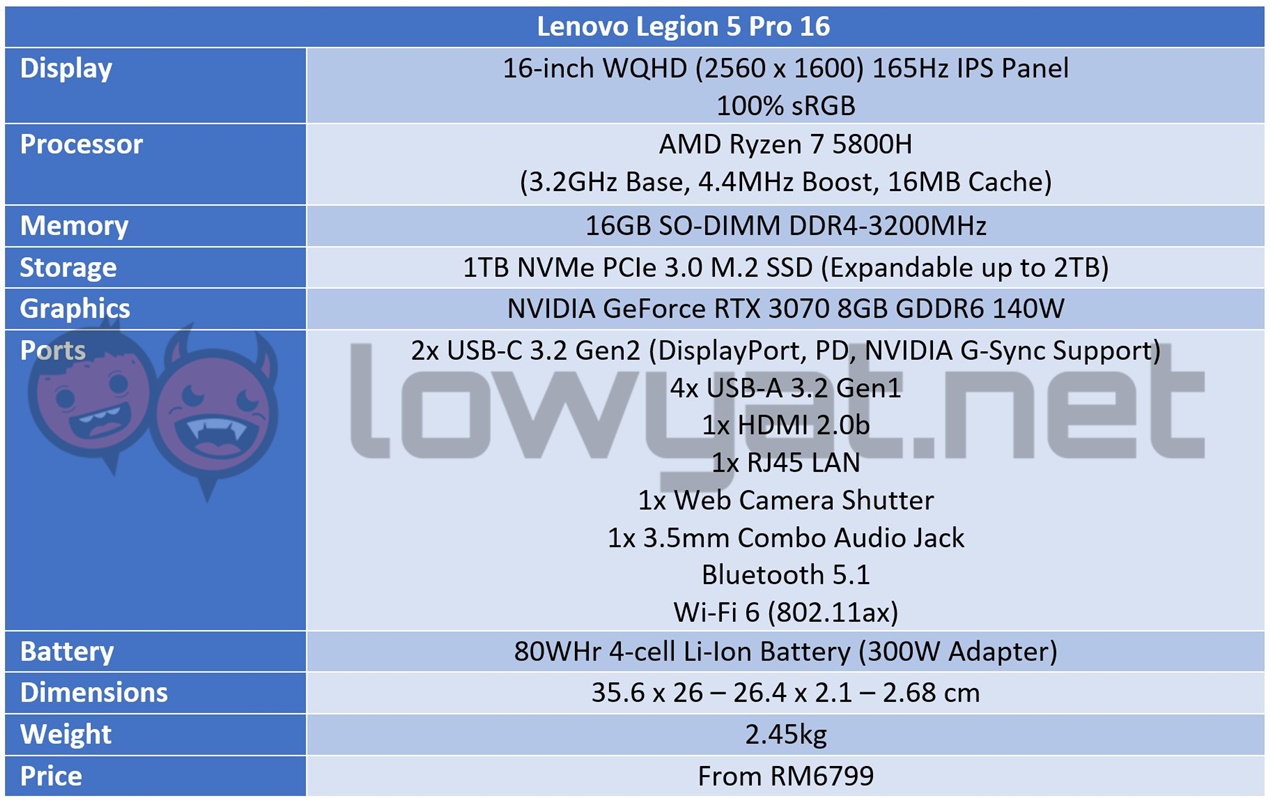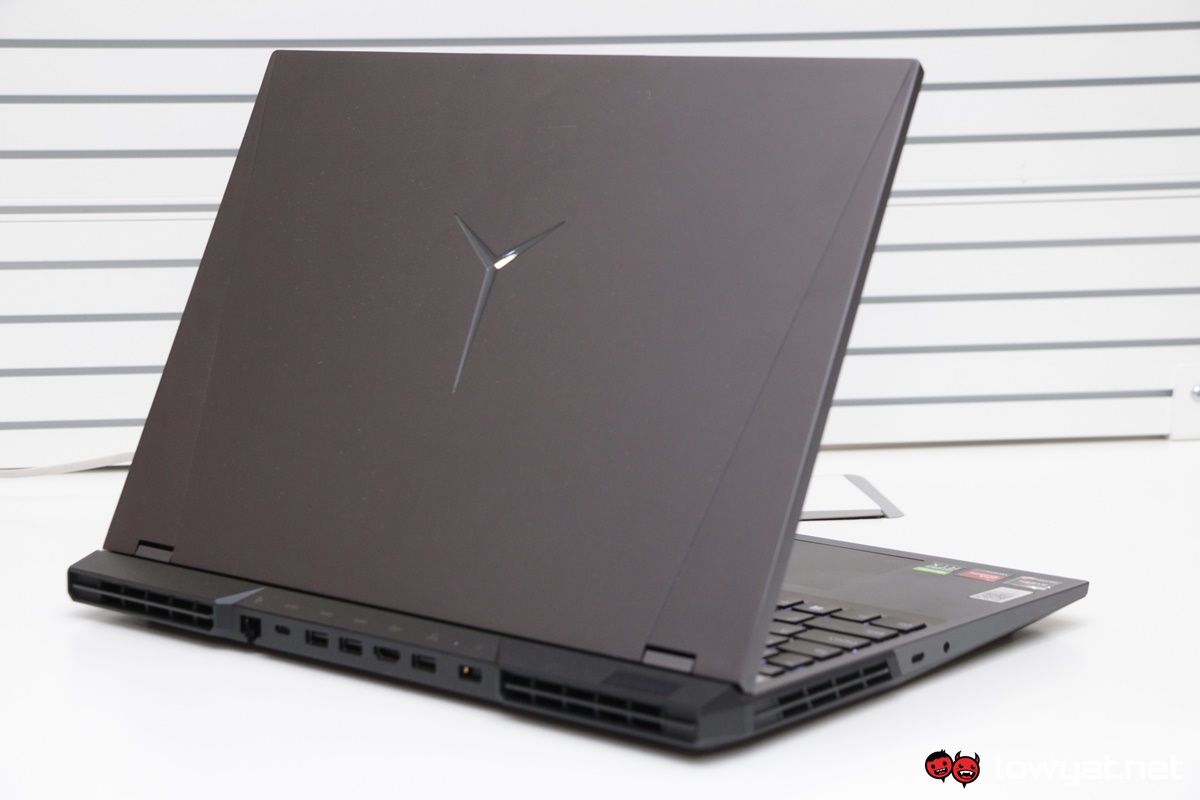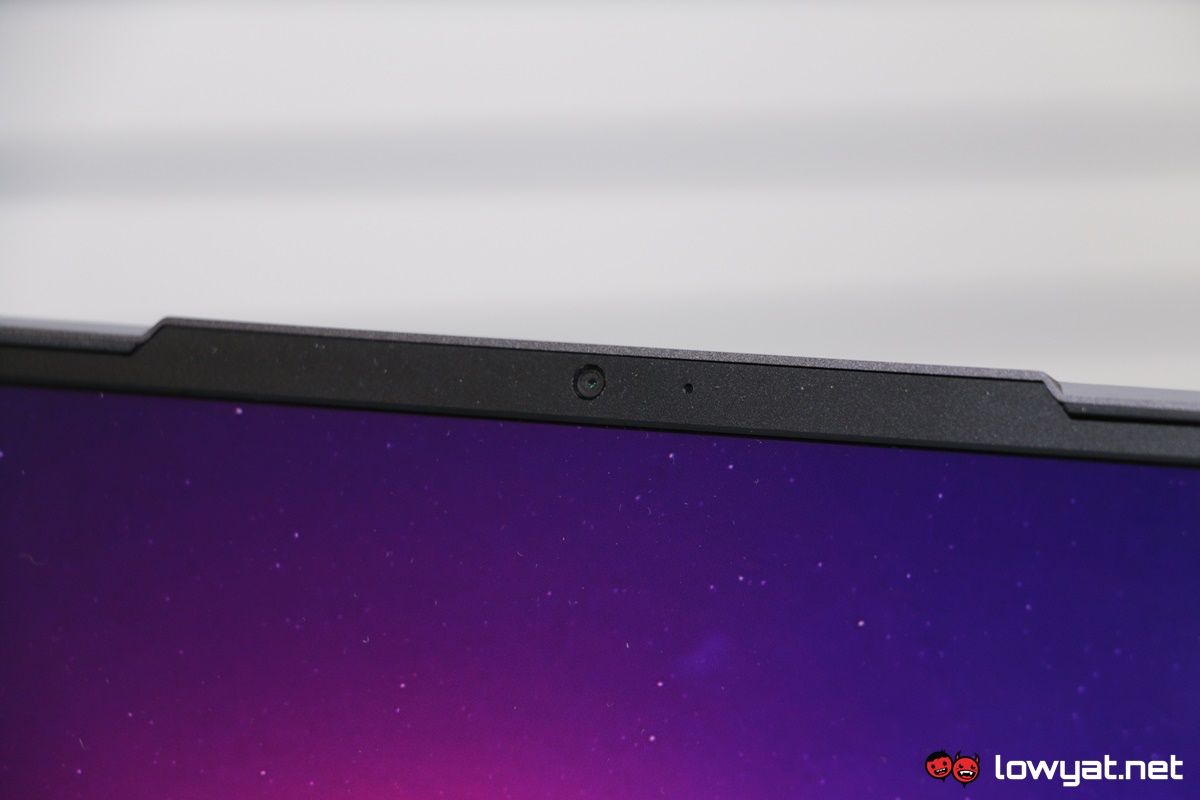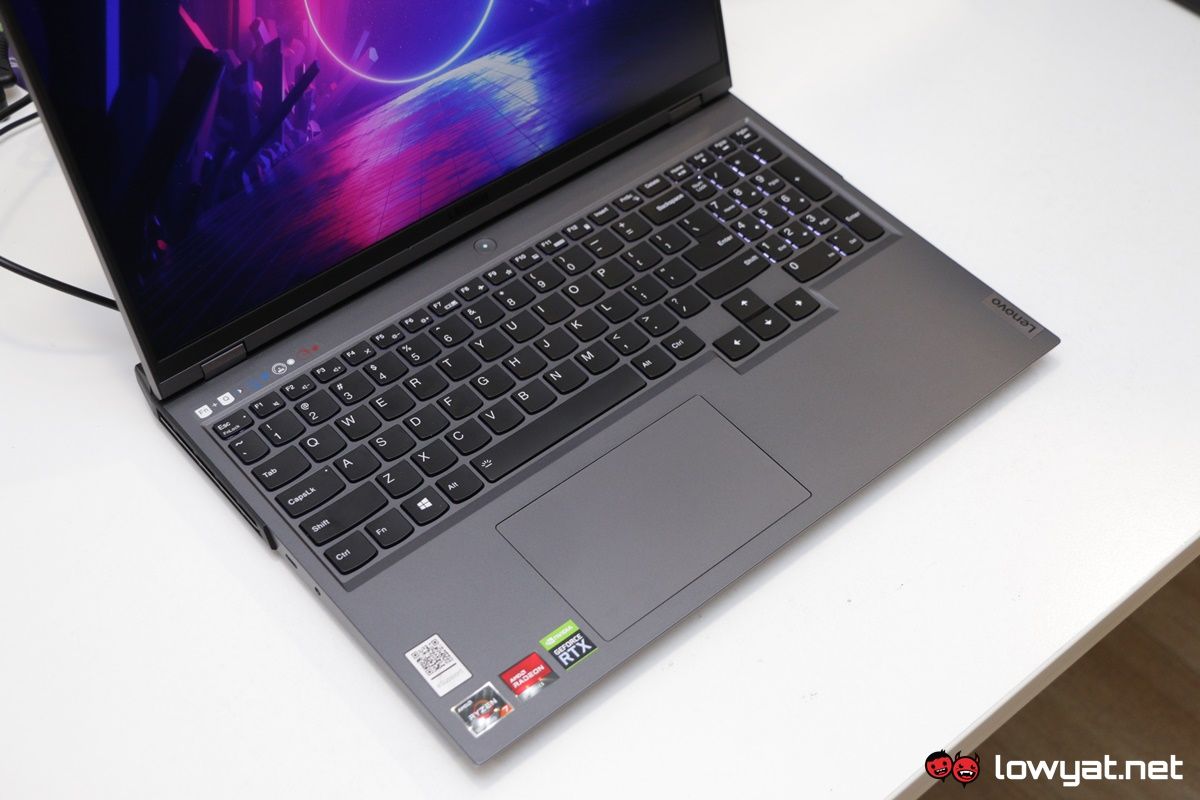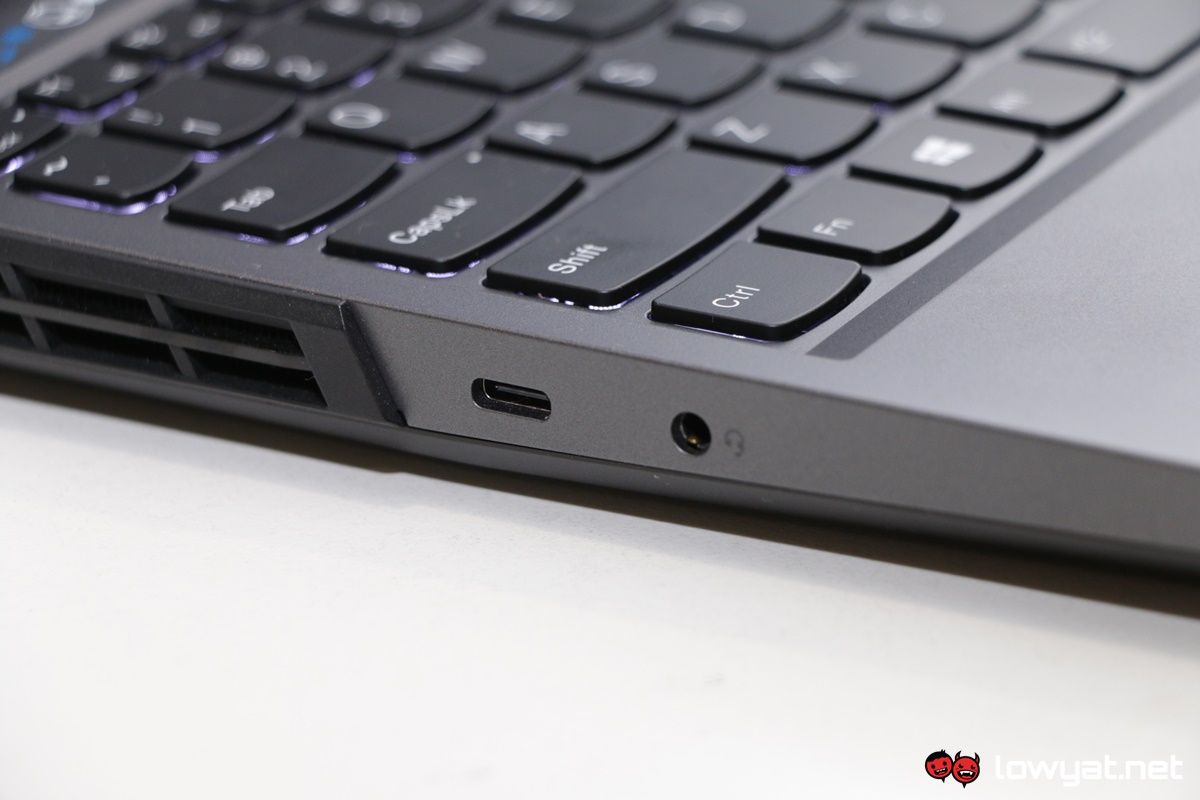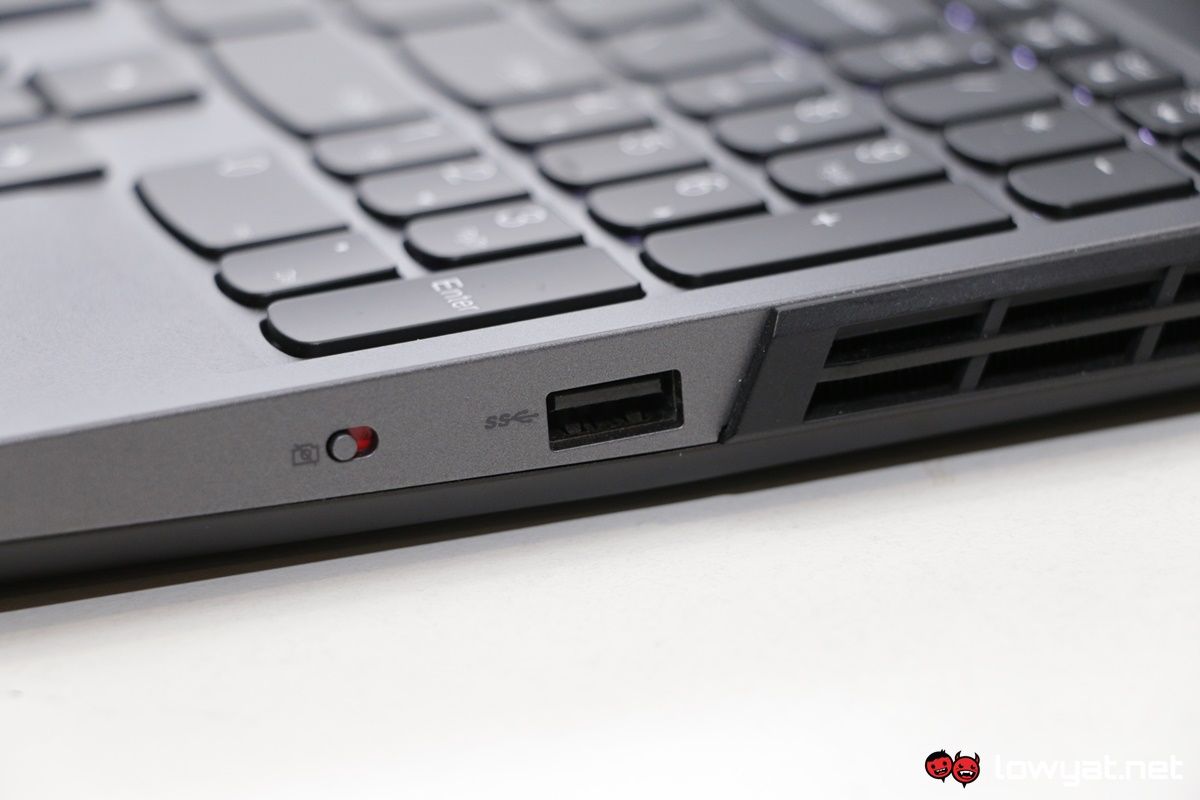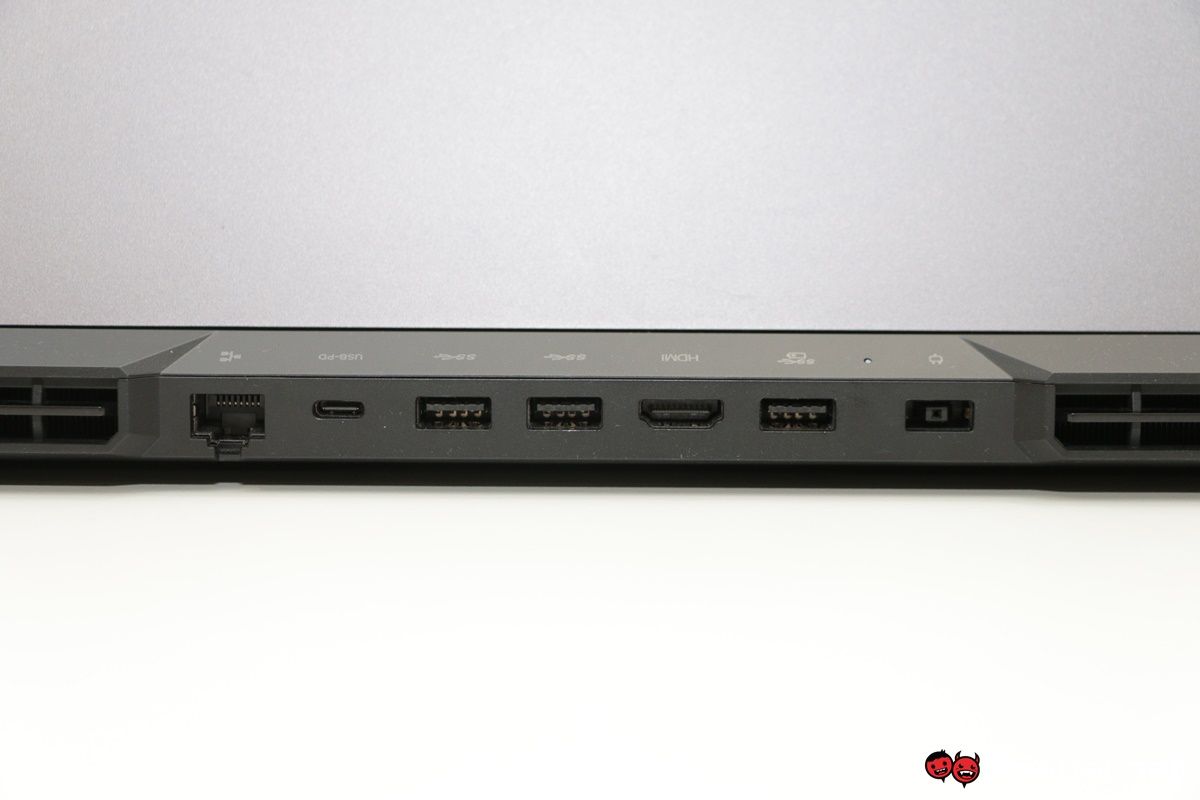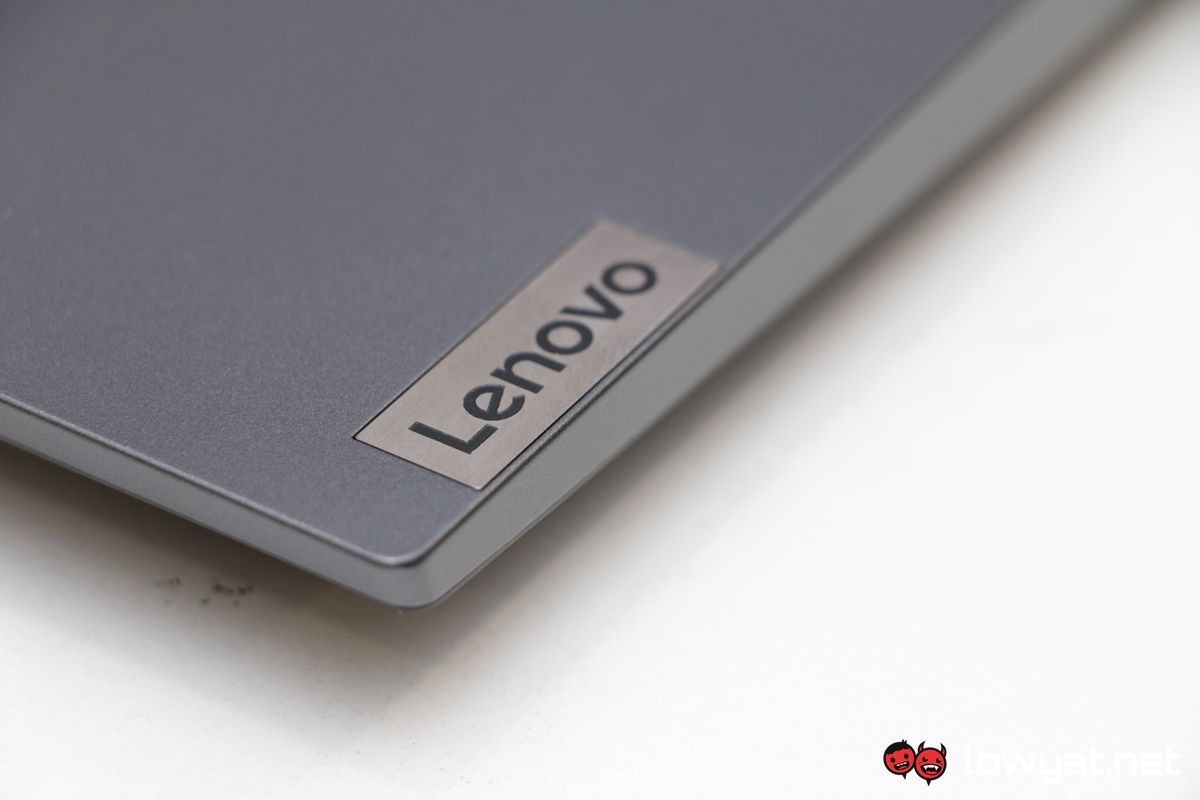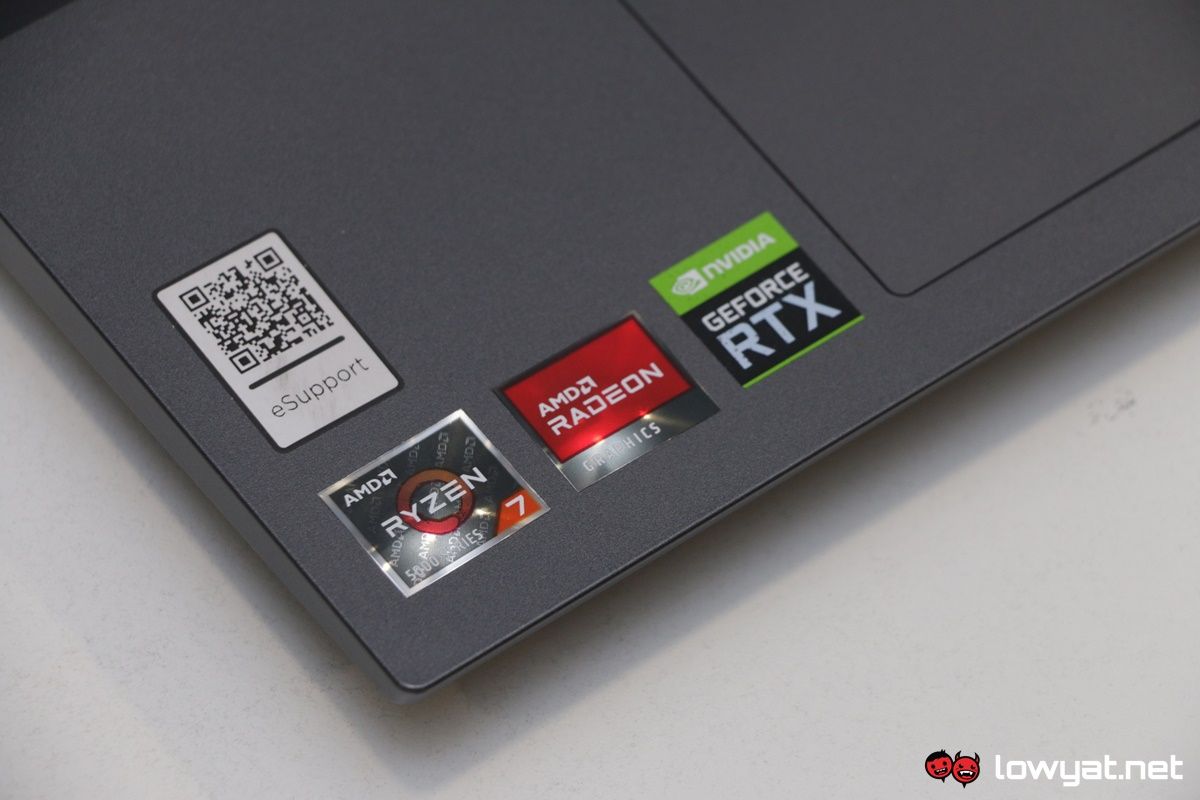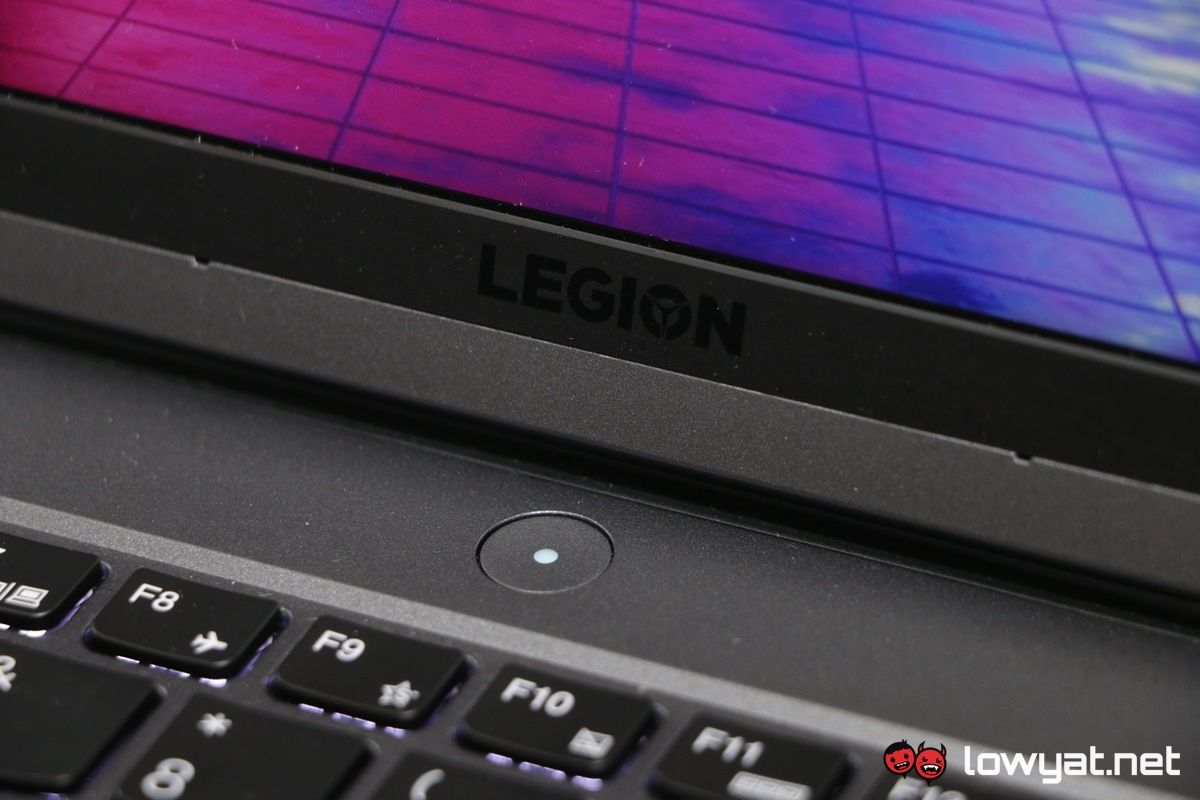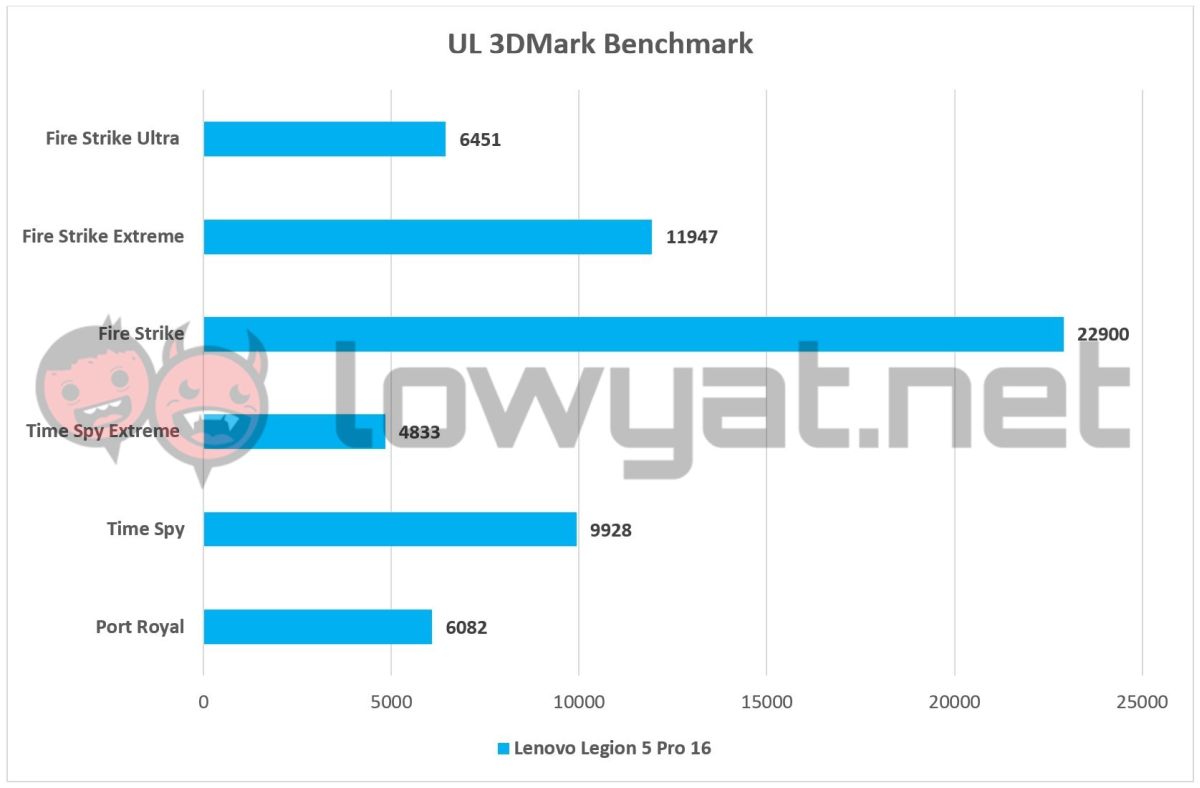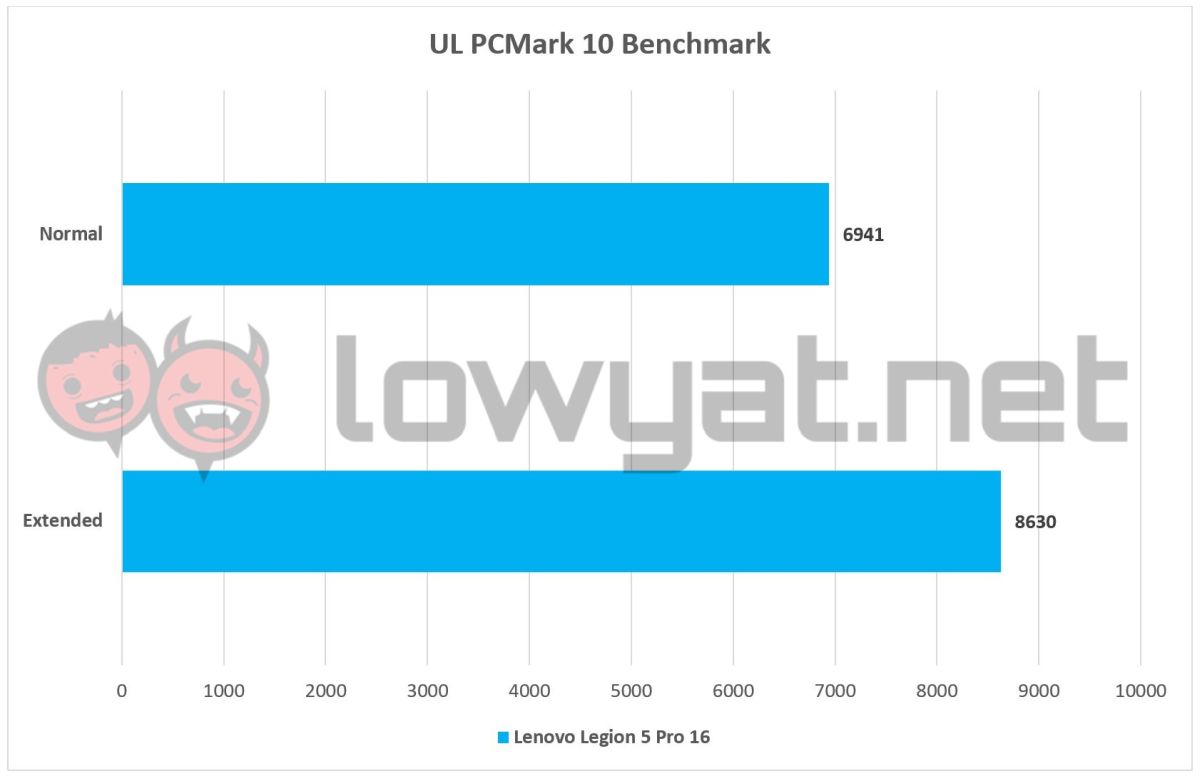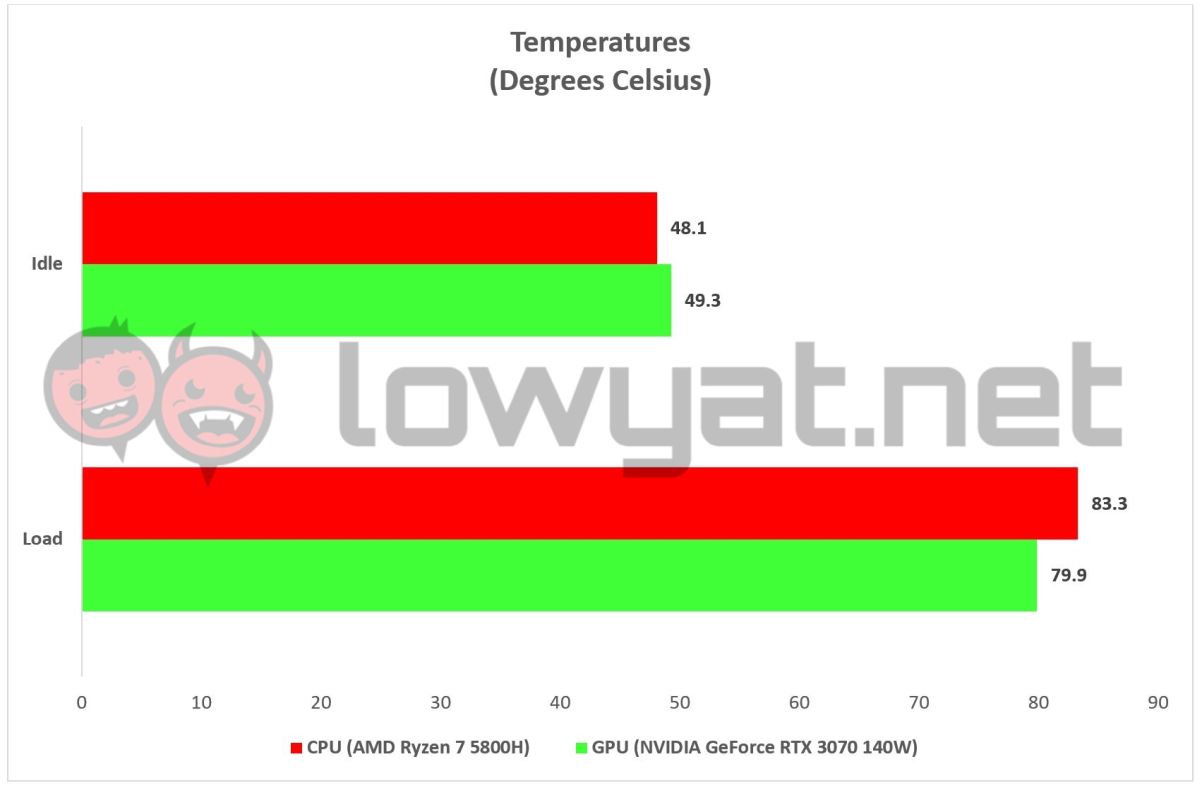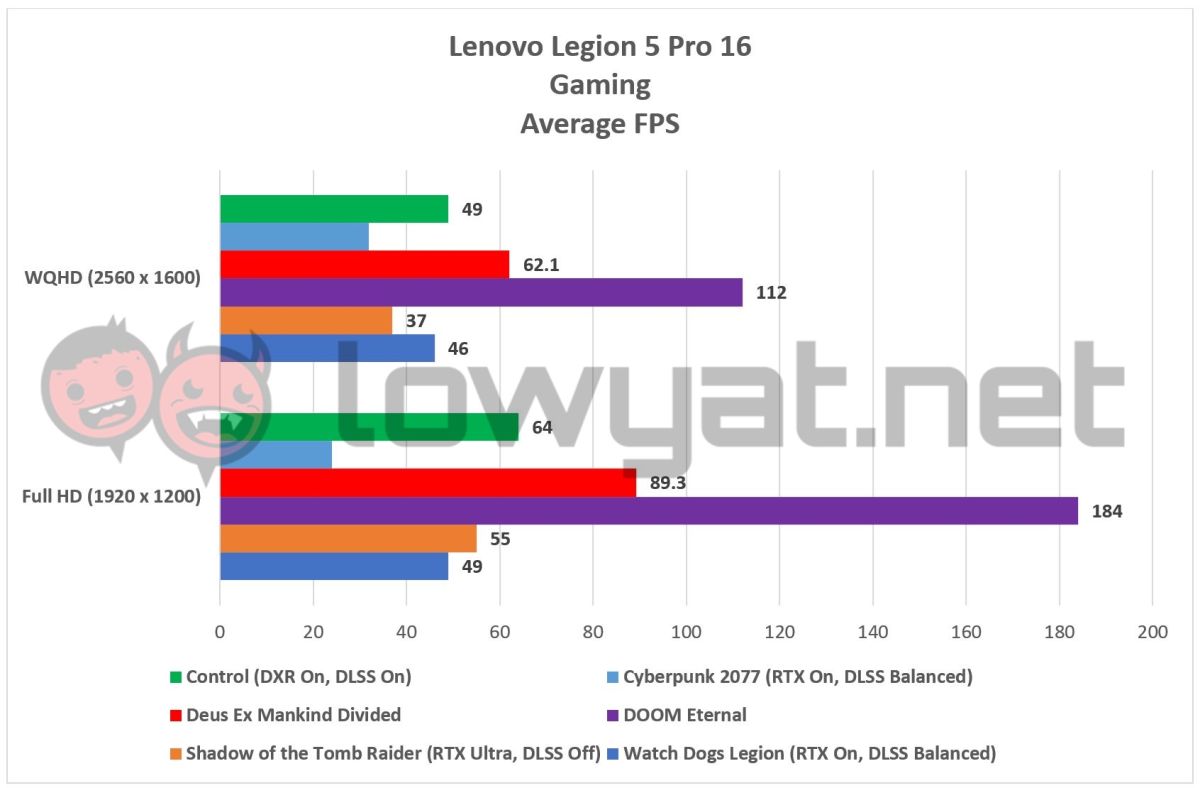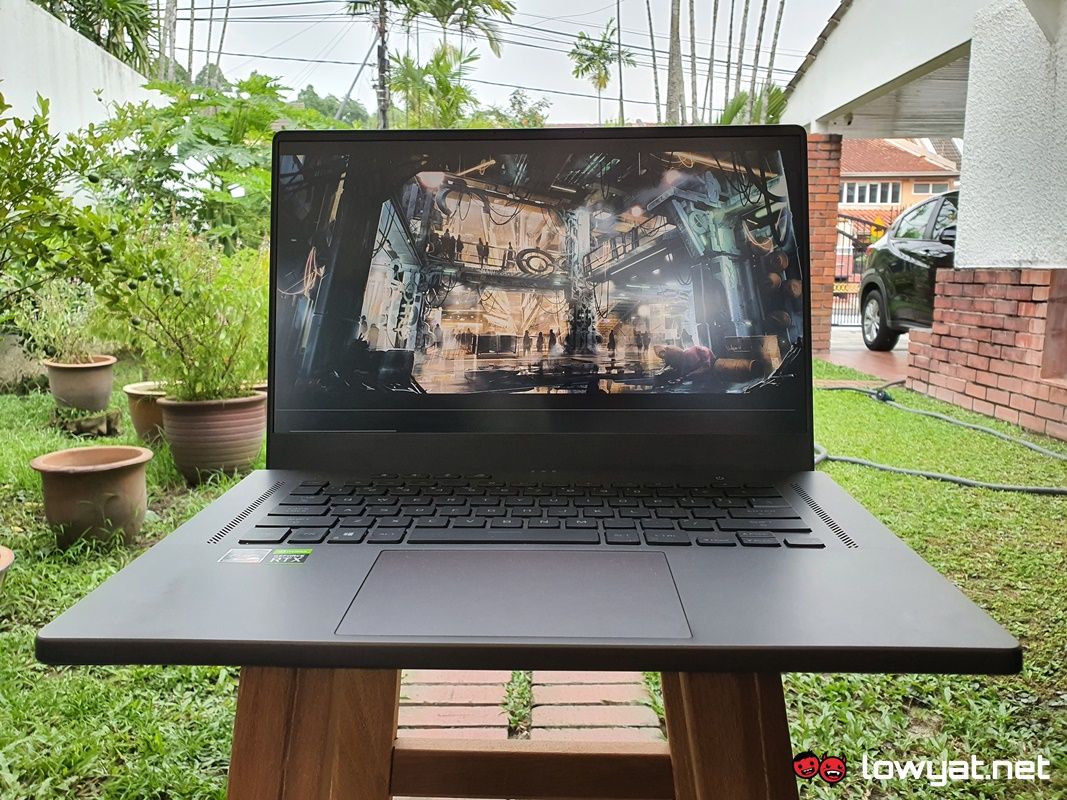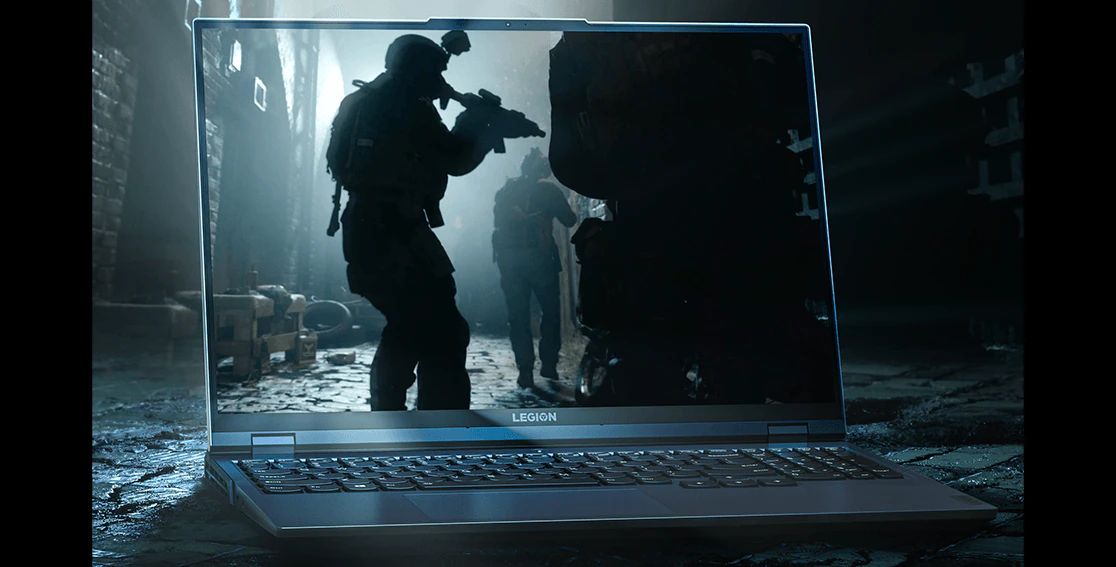The answer to that is an on-the-fence yes and no, for a multitude of reasons.
Specifications
Design
It is unsurprising that, in an effort to play it safe, Lenovo isn’t straying far from the design and motif for the Legion 5 Pro 16. Like all Legion devices, the laptop sports a semi-protruding spine, coupled with relatively aggressive-looking grilles that are flanking its rear and sides. There’s also the sturdiness of the Legion 5 Pro 16’s chassis. It feels sturdy and solid, and there is barely any flexing whenever I apply pressure on any part of the body. Likewise, the 16-inch panel display attached to it barely contorts whenever I forcibly twist it by the sides.
The combination of a 16-inch WQHD panel, 16:10 aspect ratio, and 165Hz refresh rate is eye-candy.
Speaking of the Legion 5 Pro 16’s display, it is a little surprising that Lenovo would opt-in for the 16:10 aspect ratio, instead of the standard 16:9. This means an additional bit of display real estate at the bottom but at the same time, Lenovo also manages to keep the bezels at the sides and as thin as possible, while also maintaining a webcam at the top of it. In addition, the display has a native resolution of WQHD (2560 x 1600) and a maximum refresh rate of 165Hz. As a gamer, I’ve used several WQHD panels for several years, and the resolution is a gaming sweet spot. It is also a sign that many brands are slowly moving away from offering the still standard Full HD and hardware-reliant 4K displays on laptops as the only options on the market.
Moving on, we also have the full-sized keyboard and rather sizable trackpad at the base of the Legion 5 Pro 16. Again, much like its predecessors, the keyboard uses the Truestrike mechanical switches, made in collaboration with the popular gaming peripherals brand, Corsair. On a related note, I will point out that there is an RGB LED option for the keyboard but sadly, the unit here only comes with static white LEDs.
An assault of I/O ports from all sides.
The Legion 5 Pro 16 also comes with a generous number of ports. There’s a USB-A port on the right side of the laptop, as well as a USB-C on the left, but the majority of them concentrated in its spine. In total, you’re looking at two USB-C Gen3.2 ports, four USB-A 3.1 ports, a full-sized HDMI and LAN port, and the laptop’s power port to the side. Oh, and in true Lenovo style, there’s also a webcam shutter switch on the side for extra privacy. Underneath the hood and depending on your preferences, the Legion 5 Pro 16 can actually pack some serious heat; as listed in the specs sheet above, this unit has an AMD Ryzen 7 5800H, 16GB DDR4 RAM, and a 140W variant of NVIDIA’s GeForce RTX 3070 Mobile GPU.
The one drawback to the Legion 5 Pro 16, though, is its weight. For all its hardware and the luxury of I/O ports, the laptop weighs in at 2.45kg. That’s as heavy as an MSI GE66 Raider and considerably heavier than ASUS’ ROG Zephyrus G15. Last on the list is its price. At its barebone configuration, the Legion 5 Pro 16 will set you back RM6799, while the top-of-the-line SKU will cost you RM7709, which surprisingly isn’t as expensive as I initially imagined, considering the price tag on laptops from competitor brands with similar specs.
User Experience
As I said, at 2.45kg, actually having to lug the Legion 5 Pro 16 around feels like a chore, even if it is just a few hundred grams heavier than some of its competitors. That said, that weight does serve to reaffirm the laptop’s physical presence and size. Naturally, it goes without saying that where the Legion 5 Pro 16 shines is when it is fired up for gaming and given the components that are in this machine, coupled with that 16:10 WQHD display. It is borderline blinding, with emphasis on “borderline”.
Effortless gaming experience with the Legion 5 Pro 16.
Because the synthetic benchmarks of the Legion 5 Pro 16 is what one expects of a system running on a Ryzen 7 5800H and GeForce RTX 3070, so I won’t go into too much detail about it here, since the charts in the next section also speak for themselves. Getting back to the subject of gaming, the RTX 3070 in the Legion 5 Pro 16 absolutely blazes through the majority of my benchmark titles, with only two titles – Cyberpunk 2077 and Watch Dogs Legion – showing no visible performance difference. While gaming either in 1600p or Full HD (1920 x 1200). Even more surprising is that this was the case, even when both RTX and DLSS are turned on.
The typing experience with the Truestrike keyboard on the Legion 5 Pro feels…unexciting but definitely very accurate. Despite its chiclet outlook, the actuation provides a very satisfying and precise click-and-clack with each keystroke. For that matter, the key travel distance leans a little onto the shallow side, but not to the point that my fingers become fatigued over long periods of typing. Of course, there is also the period of adjustment that you’ll have to undergo if you’re switching up from a laptop with a tenkeyless keyboard, as the layout veers a little to the left due to the extra keys.
Lacklustre battery life despite the larger-than-average 80WHr battery.
Sadly, the Legion 5 Pro 16’s battery life is not as robust and is, in my opinion, one of its drawbacks. Despite the relatively large 4-cell 80W battery inside of it, the laptop barely pulls off six hours – five hours and 45 minutes, by my count – on a single charge, and that is if I leave it in its default battery mode. Switching it to Lenovo’s Quiet mode doesn’t quite seem to increase its battery life by a significant margin either; it only seems to prolong its lifespan by as much as 30 minutes. After that, the laptop will undoubtedly let you know that it needs the power adapter.
As for the generated heat, the Legion 5 Pro 16 tends to run a little on the warm side. At full whack, I clocked the 5800H reaching temperatures as high as 85°C, while the RTX 3070 hit nearly 80°C. Mind you, this is in an air-conditioned environment where the ambient temperature is set at a steady 19°C, and with Lenovo’s built-in presets left in Auto Mode.
Benchmarks
Competition
Aside from the Legion 5 Pro 16, it goes without saying that there are several alternatives on the market, both with similar hardware specifications or price-to-performance ratios. Here are just some of the laptops that I believe to be viable alternatives.
ASUS ROG Zephyrus G15
When I first tested the original ROG Zephyrus G14, its performance was absolutely mind boggling on so many levels. So, it isn’t an overstatement when I tell you that the bigger and more powerful follow-up, the Zephyrus G15, is even better. On paper, the display is a standard 16:9, 15.6-inch 1440p IPS panel, with the same 165Hz refresh rate. Beneath the hood, the G15 has an AMD Ryzen 9 5900HS, 32GB DRR4-3200 RAM, a 1TB NVMe Gen3 SSD, and an NVIDIA GeForce RTX 3080 100W discrete GPU. In addition, the laptop is powered by a large 90WHr battery that actually gave me close to 11 hours on a single charge. On top of that, it is considerably slimmer than the Legion 5 Pro 16. The only downside to the G15 is the price: Off the shelf, this unit retails at an eye-watering RM11499.
Razer Blade 14
Announced back in the middle of June, the Razer Blade 14 is a close competitor to the Legion 5 Pro 16. For starters, it’s the first Razer laptop to feature an AMD’s overclockable Ryzen 9 5900HX CPU, and breaking away from the brand’s long-standing tradition of using Intel CPUs. Other hardware specifications include an NVIDIA GeForce RTX 30 series GPU, with the top-of-the-line model offering an RTX 3080 discrete GPU, 16GB DDR4-3200MHz RAM, and a 1TB NVMe PCIe 3.0 SSD. The display is smaller at 14-inches, but the good news is that the panel itself is a QHD (2560 x 1440) panel with a maximum refresh rate of 165Hz. It’s also got a smaller battery than the Legion 5 Pro 16 at 61.6WHr. Price-wise, the Razer Blade 14 starts from RM9999 for the RTX 3070 variant, while the top-tier model with the RTX 3080 costs RM12999.
Conclusion
As I said, some of the only caveats I can find with the Lenovo Legion 5 Pro 16 is its less than stellar battery life and its heavier build. But, for the most part, the laptop is still a very solid performer.
Lenovo’s first foray with AMD’s Ryzen 5000 Mobile series CPU is off to a good start with the Legion 5 Pro 16.
Of all the AMD Ryzen-powered gaming laptops I have tested this year, the Legion 5 Pro 16 is a reminder that you don’t necessarily have to amputate your limbs in order to own a top-end gaming laptop. Even if the very best NVIDIA GeForce mobile GPU Lenovo can offer is seemingly just an RTX 3070, but that is, in my opinion, more than plenty to comfortably run the majority of today’s triple-A titles. If that isn’t enough, remember that you’re also getting a large 16-inch display with a higher-than-average refresh rate, as well as slightly more screen real estate, thanks to its 16:10 aspect ratio. All this can be yours for less than RM9000.
